Reflections and Hypotheses of Ecological Re-territorialization
Abstract
The paper highlights how the small and very small centres, equal to 69.9% of the Italian Municipalities, the connective tissue of the “Country of the 100 Bell Towers” built over millennia, suffer abandonment processes. Insane policies of cuts in connections along with those of privatization and liberalization are among the main culprits in the disappearance of the historical landmarks of the territory. While the main poles are enjoying high speed and special funding with the EU Urban Agenda. To reverse this situation, having as a reference the Landscape Charter, for years an integrated ecological approach has been proposed based on the indications of the Leipzig Charter which calls for integrated strategies for bread-making between rural and urban, small, medium, large and metropolitan areas. It is examined the National Strategy for Inland Areas, launched in 2013, to assess the quality of life of the citizens of these areas and the law, issued in 2017, in support of the Municipalities under the 5000 inhabitants is considered. They are an opportunity to modify the settlement logic that developed over more than 300 years based on the industrialist paradigm that is increasingly showing environmental and social unsustainability. Then at the center is placed the cum-cives, that is the citizen, who with the others shares the civitas to build inclusive and sustainable communities materially and socially, the goal of Smart City.
Riflessioni ed ipotesi di ri/territorializzazione ecologica
Lo scritto evidenzia come i piccoli e piccolissimi centri, pari al 69,9% dei Comuni italiani, il tessuto connettivo del “Paese delle 100 Campanili” costruito in millenni, soffrono processi di abbandono. Politiche dissennate di tagli nei collegamenti assieme a quelle di privatizzazione e liberalizzazione sono tra le principali responsabili del venir meno dei caposaldi storici del territorio. Mentre i poli principali stanno giovandosi di alta velocità e finanziamenti speciali con Agenda Urbana UE. Per ribaltare tale situazione, avendo come riferimento la Carta del paesaggio, da anni si sta proponendo un approccio ecologico integrato basato sulle indicazioni della Carta di Lipsia che richiede strategie integrate di panificazione tra aree rurali ed urbane, piccole, medie, grandi, e metropolitane. Si prende in esame la Strategia Nazionale per le aree interne, lanciata nel 2013, per valutare la qualità della vita dei cittadini di tali territori (Lucatelli, 2016) e vengono considerate le misure della legge a sostegno dei Comuni sotto i 5000 abitanti emanata nel 2017. Essi sono un’opportunità nel modificare la logica insediativa formatesi in oltre 300 anni basata sul paradigma industrialista che sempre più sta mostrando l’insostenibilità ambientale e sociale (Meadows, 1972). Qui si ripone al centro il cum-cives, cioè il cittadino, che con gli altri condivide la civitas (Cacciari, 1991) per costruire Comunità inclusive e sostenibili materialmente e socialmente, obiettivo di Smart City.
Parole chiave
Full Text
PDF (English)DOI: https://doi.org/10.14633/AHR250
Refback
- Non ci sono refbacks, per ora.
Copyright (c) 2020 Stefano Aragona

This work is licensed under a Creative Commons Attribution-NonCommercial 4.0 International License.
........................................................................................................................................................................................................................................................................................................................................................
ArcHistoR è una rivista open access e peer reviewed (double blind), di Storia dell’architettura e Restauro, pubblicata dall’Università Mediterranea di Reggio Calabria. La rivista ha cadenza semestrale. È una rivista di Classe A (ANVUR) per l’Area 08 - Ingegneria civile ed Architettura, settori C1, D1, E1, E2, F1.
Comitato scientifico internazionale
Maria Dolores Antigüedad del Castillo-Olivares (Universidad Nacional de Educación a Distancia de España), Monica Butzek (Kunsthistorisches Institut in Florenz), Jean-François Cabestan (Université Paris 1 - Panthéon Sorbonne), Alicia Cámara Muñoz (Universidad Nacional de Educación a Distancia de España), David Friedman (Massachussets Institute of Technology), Alexandre Gady (Université Paris-IV-Sorbonne), Jörg Garms (Universität Wien), Miles Glenndinning (Scottish Centre for Conservation Studies, University of Edinburgh), Mark Wilson Jones (University of Bath), Loughlin Kealy (University College Dublin), Paulo Lourenço (Department of Civil Engineering, University of Minho), David Marshall (University of Melbourne), Werner Oechslin (ETH, Zurich, Stiftung Bibliothek Werner Oechslin, Einsiedeln), José Luis Sancho (Dirección de Conservación de Bienes Histórico-Artísticos, Palacio Real, Madrid), Dmitrij O. Švidkovskij (Moscow Architectural Institute, MARCHI)
Comitato direttivo
Tommaso Manfredi (direttore responsabile), Giuseppina Scamardì (direttore editoriale), Antonello Alici, Salvatore Di Liello, Fabrizio Di Marco, Paolo Faccio, Mariacristina Giambruno, Bruno Mussari, Annunziata Maria Oteri, Francesca Passalacqua, Edoardo Piccoli, Renata Prescia, Nino Sulfaro, Fabio Todesco, Guglielmo Villa
........................................................................................................................................................................................................................................................................................................................................................
Laboratorio CROSS. Storia dell'architettura e Restauro

ISSN 2384-8898

This work is licensed under a Creative Commons Attribution-NonCommercial 2.0 Generic License.

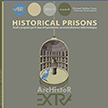
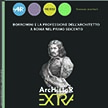
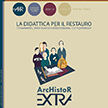

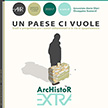
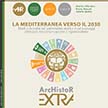
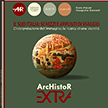
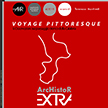
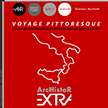
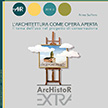
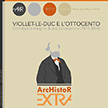

_2.jpg)



